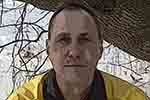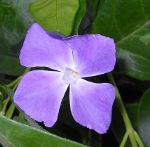Australian scientist finds new causes of obstructive slee
- Johnny1959
- Posts: 37
- Joined: Fri Sep 21, 2007 12:14 pm
Australian scientist finds new causes of obstructive slee
Adnoids, tonsils x2, pillar proedure, UVULOPALATAL FLAP SURGERY, deviated septum x2, tongue op
Re: Australian scientist finds new causes of obstructive slee
From his research groups page (see: http://www.neura.edu.au/research/themes/eckert-group ):
While continuous positive airway pressure (CPAP) is highly effective in treating sleep apnoea (See: What is obstructive sleep apnoea), approximately 50% of patients are intolerant or non-adherent. Responses to alternative therapies are variable and are currently difficult to predict.
From the papers abstract (see: http://www.atsjournals.org/doi/abs/10.1 ... o8DjEPfu8Y ):
– – – – – – –
Measurements and Main Results: Pathophysiologic traits varied substantially among participants.
36% of patients with OSA had minimal genioglossus muscle responsiveness during sleep
37% had a low arousal threshold
36% had high (respiratory control) loop gain
28% had multiple nonanatomic features.
Although overall the upper airway was more collapsible in patients with OSA (Pcrit, 0.3 [−1.5 to 1.9] vs. −6.2 [−12.4 to −3.6] cm H2O; P <0.01), 19% had a relatively noncollapsible upper airway similar to many of the control subjects (Pcrit, −2 to −5 cm H2O). In these patients, loop gain was almost twice as high as patients with a Pcrit greater than −2 cm H2O (−5.9 [−8.8 to −4.5] vs. −3.2 [−4.8 to −2.4] dimensionless; P = 0.01). A three-point scale for weighting the relative contribution of the traits is proposed. It suggests that nonanatomic features play an important role in 56% of patients with OSA.
– – – – – –
It is interesting how the 50% find CPAP unusable and apparently 56% of patients with OSA have causes of OSA unrelated to the anatomy which CPAP is designed to deal with. While the high respiratory control loop gain I thought was the major factor may only play in some 36% of the cases my instinct that people stop using CPAP because it does not work for them is apparently on the money!
While continuous positive airway pressure (CPAP) is highly effective in treating sleep apnoea (See: What is obstructive sleep apnoea), approximately 50% of patients are intolerant or non-adherent. Responses to alternative therapies are variable and are currently difficult to predict.
From the papers abstract (see: http://www.atsjournals.org/doi/abs/10.1 ... o8DjEPfu8Y ):
– – – – – – –
Measurements and Main Results: Pathophysiologic traits varied substantially among participants.
36% of patients with OSA had minimal genioglossus muscle responsiveness during sleep
37% had a low arousal threshold
36% had high (respiratory control) loop gain
28% had multiple nonanatomic features.
Although overall the upper airway was more collapsible in patients with OSA (Pcrit, 0.3 [−1.5 to 1.9] vs. −6.2 [−12.4 to −3.6] cm H2O; P <0.01), 19% had a relatively noncollapsible upper airway similar to many of the control subjects (Pcrit, −2 to −5 cm H2O). In these patients, loop gain was almost twice as high as patients with a Pcrit greater than −2 cm H2O (−5.9 [−8.8 to −4.5] vs. −3.2 [−4.8 to −2.4] dimensionless; P = 0.01). A three-point scale for weighting the relative contribution of the traits is proposed. It suggests that nonanatomic features play an important role in 56% of patients with OSA.
– – – – – –
It is interesting how the 50% find CPAP unusable and apparently 56% of patients with OSA have causes of OSA unrelated to the anatomy which CPAP is designed to deal with. While the high respiratory control loop gain I thought was the major factor may only play in some 36% of the cases my instinct that people stop using CPAP because it does not work for them is apparently on the money!
May any shills trolls sockpuppets or astroturfers at cpaptalk.com be like chaff before the wind!
Re: Australian scientist finds new causes of obstructive slee
It will be interesting to see if any American scientists pick up on this research. I am skeptical but hopefully, I will be proven wrong.
49er
49er
Todzo wrote:From his research groups page (see: http://www.neura.edu.au/research/themes/eckert-group ):
While continuous positive airway pressure (CPAP) is highly effective in treating sleep apnoea (See: What is obstructive sleep apnoea), approximately 50% of patients are intolerant or non-adherent. Responses to alternative therapies are variable and are currently difficult to predict.
From the papers abstract (see: http://www.atsjournals.org/doi/abs/10.1 ... o8DjEPfu8Y ):
– – – – – – –
Measurements and Main Results: Pathophysiologic traits varied substantially among participants.
36% of patients with OSA had minimal genioglossus muscle responsiveness during sleep
37% had a low arousal threshold
36% had high (respiratory control) loop gain
28% had multiple nonanatomic features.
Although overall the upper airway was more collapsible in patients with OSA (Pcrit, 0.3 [−1.5 to 1.9] vs. −6.2 [−12.4 to −3.6] cm H2O; P <0.01), 19% had a relatively noncollapsible upper airway similar to many of the control subjects (Pcrit, −2 to −5 cm H2O). In these patients, loop gain was almost twice as high as patients with a Pcrit greater than −2 cm H2O (−5.9 [−8.8 to −4.5] vs. −3.2 [−4.8 to −2.4] dimensionless; P = 0.01). A three-point scale for weighting the relative contribution of the traits is proposed. It suggests that nonanatomic features play an important role in 56% of patients with OSA.
– – – – – –
It is interesting how the 50% find CPAP unusable and apparently 56% of patients with OSA have causes of OSA unrelated to the anatomy which CPAP is designed to deal with. While the high respiratory control loop gain I thought was the major factor may only play in some 36% of the cases my instinct that people stop using CPAP because it does not work for them is apparently on the money!
_________________
| Mask: SleepWeaver Elan™ Soft Cloth Nasal CPAP Mask - Starter Kit |
| Humidifier: S9™ Series H5i™ Heated Humidifier with Climate Control |
| Additional Comments: Use SleepyHead |
Re: Australian scientist finds new causes of obstructive slee
I think at least one will. I seem to recall Dr. Park being involved in a project which would deal with the "36% of patients with OSA [that] had minimal genioglossus muscle responsiveness during sleep"!
49er wrote:It will be interesting to see if any American scientists pick up on this research. I am skeptical but hopefully, I will be proven wrong.
49er
Todzo wrote:From his research groups page (see: http://www.neura.edu.au/research/themes/eckert-group ):
While continuous positive airway pressure (CPAP) is highly effective in treating sleep apnoea (See: What is obstructive sleep apnoea), approximately 50% of patients are intolerant or non-adherent. Responses to alternative therapies are variable and are currently difficult to predict.
From the papers abstract (see: http://www.atsjournals.org/doi/abs/10.1 ... o8DjEPfu8Y ):
– – – – – – –
Measurements and Main Results: Pathophysiologic traits varied substantially among participants.
36% of patients with OSA had minimal genioglossus muscle responsiveness during sleep
37% had a low arousal threshold
36% had high (respiratory control) loop gain
28% had multiple nonanatomic features.
Although overall the upper airway was more collapsible in patients with OSA (Pcrit, 0.3 [−1.5 to 1.9] vs. −6.2 [−12.4 to −3.6] cm H2O; P <0.01), 19% had a relatively noncollapsible upper airway similar to many of the control subjects (Pcrit, −2 to −5 cm H2O). In these patients, loop gain was almost twice as high as patients with a Pcrit greater than −2 cm H2O (−5.9 [−8.8 to −4.5] vs. −3.2 [−4.8 to −2.4] dimensionless; P = 0.01). A three-point scale for weighting the relative contribution of the traits is proposed. It suggests that nonanatomic features play an important role in 56% of patients with OSA.
– – – – – –
It is interesting how the 50% find CPAP unusable and apparently 56% of patients with OSA have causes of OSA unrelated to the anatomy which CPAP is designed to deal with. While the high respiratory control loop gain I thought was the major factor may only play in some 36% of the cases my instinct that people stop using CPAP because it does not work for them is apparently on the money!
May any shills trolls sockpuppets or astroturfers at cpaptalk.com be like chaff before the wind!













